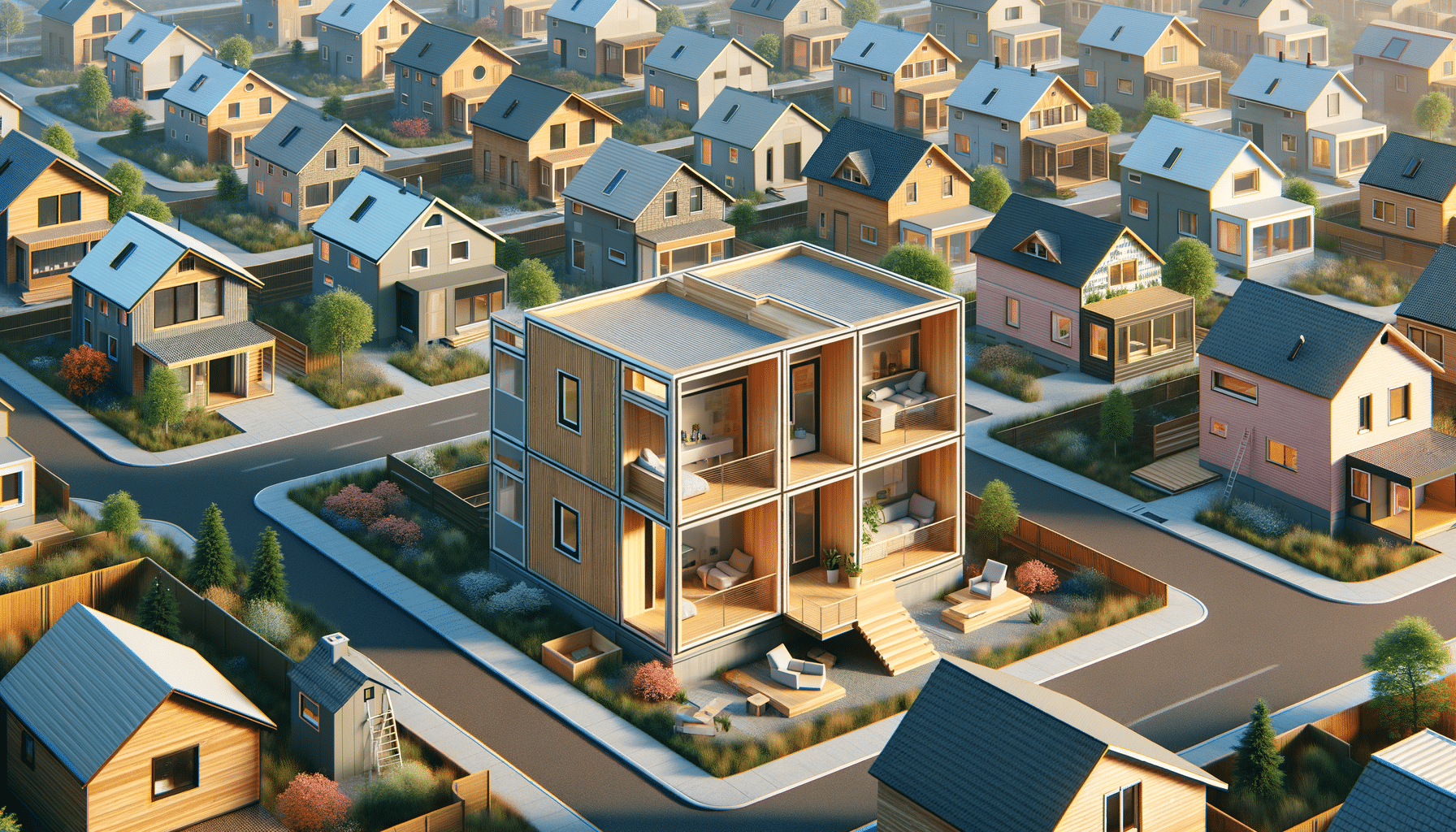
What Are Modular Homes? Discover Affordable Living
Introduction to Modular Homes
Modular homes are increasingly becoming a popular choice for homeowners seeking affordability and efficiency in their living spaces. These homes are prefabricated structures that are constructed in sections, or modules, within a factory setting. Once completed, these modules are transported to the building site and assembled to form a complete home. This method of construction offers numerous advantages, including reduced building time, cost savings, and design flexibility.
The concept of modular homes is not entirely new, but advancements in technology and design have made them a viable alternative to traditional home construction. As housing prices continue to rise, many people are exploring modular homes as a cost-effective solution that does not compromise on quality or style. Additionally, modular homes are built to adhere to the same building codes and standards as site-built homes, ensuring safety and durability.
The Construction Process of Modular Homes
The construction of modular homes begins in a controlled factory environment, where each module is built to precise specifications. This setting allows for greater quality control and minimizes the impact of weather-related delays that can affect traditional construction. The factory process involves several stages, including framing, insulation, plumbing, and electrical work, all of which are completed before the modules are transported to the site.
Once the modules arrive at the building site, they are assembled on a pre-prepared foundation. The assembly process is typically faster than traditional construction, often taking just a few days to complete. This efficiency not only reduces labor costs but also allows homeowners to move into their new homes much sooner. Furthermore, the factory-built nature of modular homes means that they can be customized to meet the specific needs and preferences of the homeowner, offering a wide range of design options.
- Efficient use of materials
- Reduced construction waste
- Consistent quality control
Advantages of Modular Homes
One of the primary advantages of modular homes is their cost-effectiveness. The factory construction process allows for bulk purchasing of materials and efficient labor usage, resulting in significant savings compared to traditional home building. Additionally, the speed of construction reduces the overall cost of labor and minimizes the time required for financing, further lowering expenses for homeowners.
Modular homes also offer flexibility in design, allowing for a wide variety of styles and layouts. Homeowners can choose from pre-designed plans or work with architects to create a custom design that meets their specific needs. This flexibility extends to the ability to easily expand or modify the home in the future, making modular homes a practical choice for growing families or changing needs.
- Cost savings
- Design flexibility
- Quick construction time
Environmental Impact of Modular Homes
Modular homes are often considered more environmentally friendly than traditional homes due to their efficient use of resources and reduced waste. The factory setting allows for precise cutting and assembly of materials, minimizing waste and optimizing the use of resources. Additionally, many modular home manufacturers incorporate sustainable materials and energy-efficient features into their designs, further reducing the environmental impact.
The reduced construction time also contributes to a lower carbon footprint, as less energy is required for on-site building activities. Furthermore, modular homes can be designed to incorporate renewable energy sources, such as solar panels, enhancing their sustainability and reducing long-term energy costs for homeowners.
- Reduced construction waste
- Energy-efficient designs
- Potential for renewable energy integration
Challenges and Considerations
While modular homes offer numerous benefits, there are also challenges and considerations to keep in mind. One potential challenge is the transportation of modules to the building site, which can be complex and costly, particularly for remote or difficult-to-access locations. Additionally, while the design flexibility is a significant advantage, it may also require careful planning and coordination to ensure that the final home meets all local building codes and regulations.
Financing a modular home can also differ from traditional home financing, as lenders may have specific requirements or restrictions related to prefabricated homes. It’s important for potential homeowners to research and understand these aspects before proceeding with a modular home purchase.
Despite these challenges, the growing popularity of modular homes is a testament to their potential as a practical and innovative solution for modern living. With careful planning and consideration, modular homes can provide a high-quality, cost-effective, and sustainable living option for a wide range of homeowners.


